The Chimú civilisation (1000-1450 A.D.)
This culture rose on the northern coast, slowly subduing cities and populations (except the Chancay culture), up to its heydey in the mid-13th century. It restores and enlarges the network of old Mochica ducts. Its capital, Chan Chan, covers over 20 square km. The walls are decorated with bas-reliefs of geometrical and animal mould motifs. Even more significant than pottery, Chimú jewellery uses already established techniques (welding, alloys, lost-wax casting, filigree), but with an unparalleled variety of forms. Also, mass production is introduced for economic and social reasons, paralleled by the standardisation of shapes and decorations.
The main feature of the Chimú ceramic is the colour black, due to the systematic baking short of oxygen. The most common form is the stirrup globular vase, inherited by the Moche. Also typical are double whistling pots, vases printed in the round depicting animals, people and fruits, and newly introduced plastic figurines between handle and neck.
Around 1463, the Chimú are absorbed by the Inca empire, with new forms such as the arybalos (black-coloured and smaller than the Inca) in the style called Chimú-Inca.
Cuy-shaped vase with bracket loop

Cuy-shaped vase with bracket loop

Cuy-shaped vase with bracket loop

Cuy-shaped vase with bracket loop

Ornitomorphic bi-chamber stirrup spout vessel
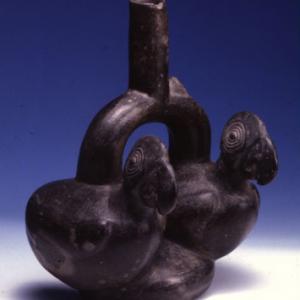
Ornitomorphic bi-chamber stirrup spout vessel

Ornitomorphic bi-chamber stirrup spout vessel

Ornitomorphic bi-chamber stirrup spout vessel

Globular vase decorated with wave patterns

Globular vase decorated with wave patterns

Globular vase decorated with wave patterns

Globular vase decorated with wave patterns

Vase in the shape of a salamander

Vase in the shape of a salamander

Vase in the shape of a salamander

Vase in the shape of a salamander

Two-chamber whistling vase decorated with geometric patterns in relief

Two-chamber whistling vase decorated with geometric patterns in relief

Two-chamber whistling vase decorated with geometric patterns in relief

Two-chamber whistling vase decorated with geometric patterns in relief

Disc-shaped flask with figures

Disc-shaped flask with figures

Disc-shaped flask with figures

Disc-shaped flask with figures

Lenticular vase decorated with engraved geometric motifs
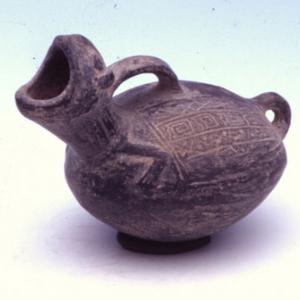
Lenticular vase decorated with engraved geometric motifs

Lenticular vase decorated with engraved geometric motifs

Lenticular vase decorated with engraved geometric motifs

Pot with bracket shaped like a feline
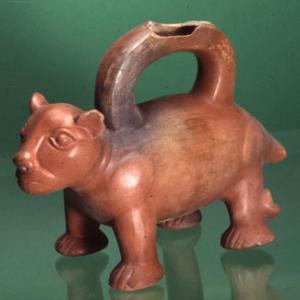
Pot with bracket shaped like a feline

Pot with bracket shaped like a feline

Pot with bracket shaped like a feline

Figurine depicting a male character

Figurine depicting a male character

Figurine depicting a male character

Figurine depicting a male character

Bronze cob

Bronze cob

Bronze cob

Bronze cob

Globular vase with relief representation of spondylus shells

Globular vase with relief representation of spondylus shells

Globular vase with relief representation of spondylus shells

Globular vase with relief representation of spondylus shells

Vase with two-chamber bridge loop
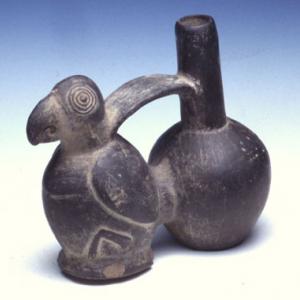
Vase with two-chamber bridge loop

Vase with two-chamber bridge loop

Vase with two-chamber bridge loop

Vase in the shape of a bird
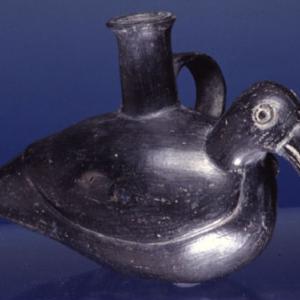
Vase in the shape of a bird

Vase in the shape of a bird

Vase in the shape of a bird

Vase-bottle in the shape of spondylus shell

Vase-bottle in the shape of spondylus shell

Vase-bottle in the shape of spondylus shell

Vase-bottle in the shape of spondylus shell

Two-chamber vase with bridge loop

Two-chamber vase with bridge loop

Two-chamber vase with bridge loop

Two-chamber vase with bridge loop

Parcel

Parcel

Parcel

Parcel

Globular vase with bracket loop with plastic figurine between loop and neck

Globular vase with bracket loop with plastic figurine between loop and neck

Globular vase with bracket loop with plastic figurine between loop and neck

Globular vase with bracket loop with plastic figurine between loop and neck

Vase in the shape of a parrot with concentric eyes engraved
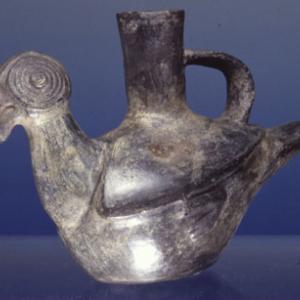
Vase in the shape of a parrot with concentric eyes engraved

Vase in the shape of a parrot with concentric eyes engraved

Vase in the shape of a parrot with concentric eyes engraved

Flask with shell-shaped side sockets with horizontal lines engraved

Flask with shell-shaped side sockets with horizontal lines engraved

Flask with shell-shaped side sockets with horizontal lines engraved

Flask with shell-shaped side sockets with horizontal lines engraved

Vase representing a jaguar
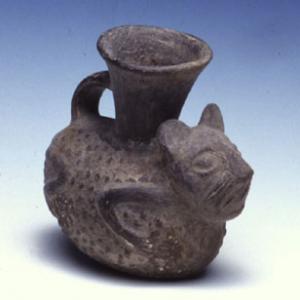
Vase representing a jaguar

Vase representing a jaguar

Vase representing a jaguar

Vase with a bracket shaped like a fruit (or a shell?)

Vase with a bracket shaped like a fruit (or a shell?)

Vase with a bracket shaped like a fruit (or a shell?)

Vase with a bracket shaped like a fruit (or a shell?)

Globular vase with bracket loop with plastic figurine

Globular vase with bracket loop with plastic figurine

Globular vase with bracket loop with plastic figurine

Globular vase with bracket loop with plastic figurine

Salamander-shaped vase with bracket loop

Salamander-shaped vase with bracket loop

Salamander-shaped vase with bracket loop

Salamander-shaped vase with bracket loop

Vase in the shape of cucurbitacea (melon)

Vase in the shape of cucurbitacea (melon)

Vase in the shape of cucurbitacea (melon)

Vase in the shape of cucurbitacea (melon)

Vase-bottle shaped like a feline’s head

Vase-bottle shaped like a feline’s head

Vase-bottle shaped like a feline’s head

Vase-bottle shaped like a feline’s head

Disc flask decorated in relief with a male character

Disc flask decorated in relief with a male character

Disc flask decorated in relief with a male character

Disc flask decorated in relief with a male character

Whistling vessel in the shape of shell "buccina"
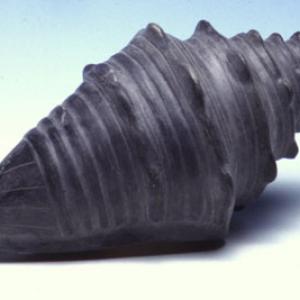
Whistling vessel in the shape of shell "buccina"

Whistling vessel in the shape of shell "buccina"

Whistling vessel in the shape of shell "buccina"

Oval vase with engraved geometric decoration

Oval vase with engraved geometric decoration

Oval vase with engraved geometric decoration

Oval vase with engraved geometric decoration

Ovoid vessel with chamber made up of coiled coils of a snake

Ovoid vessel with chamber made up of coiled coils of a snake

Ovoid vessel with chamber made up of coiled coils of a snake

Ovoid vessel with chamber made up of coiled coils of a snake

Fruit-shaped vase (annona cherimolia) with wide lateral opening
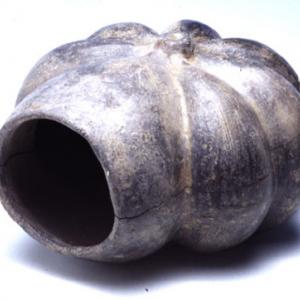
Fruit-shaped vase (annona cherimolia) with wide lateral opening

Fruit-shaped vase (annona cherimolia) with wide lateral opening

Fruit-shaped vase (annona cherimolia) with wide lateral opening

Vase-bottle shaped like a blade head

Vase-bottle shaped like a blade head

Vase-bottle shaped like a blade head

Vase-bottle shaped like a blade head

Vase-bottle shaped like a blade head

Vase-bottle shaped like a blade head

Vase-bottle shaped like a blade head

Vase-bottle shaped like a blade head

Discidal flask decorated in relief by a stylized bird on a "goose flesh" bottom

Discidal flask decorated in relief by a stylized bird on a "goose flesh" bottom

Discidal flask decorated in relief by a stylized bird on a "goose flesh" bottom

Discidal flask decorated in relief by a stylized bird on a "goose flesh" bottom

Vase-bottle with two zoomorphic plastic figures on the sides of the neck

Vase-bottle with two zoomorphic plastic figures on the sides of the neck

Vase-bottle with two zoomorphic plastic figures on the sides of the neck

Vase-bottle with two zoomorphic plastic figures on the sides of the neck

Vase in the shape of a bird

Vase in the shape of a bird

Vase in the shape of a bird

Vase in the shape of a bird

Pot with bracket loop with two small side chambers in the shape of a shell strombus

Pot with bracket loop with two small side chambers in the shape of a shell strombus

Pot with bracket loop with two small side chambers in the shape of a shell strombus

Pot with bracket loop with two small side chambers in the shape of a shell strombus

Fruit-shaped pot with bracket loop (pacae = inga fevillei)

Fruit-shaped pot with bracket loop (pacae = inga fevillei)

Fruit-shaped pot with bracket loop (pacae = inga fevillei)

Fruit-shaped pot with bracket loop (pacae = inga fevillei)

Biconical bottle-vase

Biconical bottle-vase

Biconical bottle-vase

Biconical bottle-vase

Goblet rattle with globular cup

Goblet rattle with globular cup

Goblet rattle with globular cup

Goblet rattle with globular cup

Vase with bracket shaped as an otaria

Vase with bracket shaped as an otaria

Vase with bracket shaped as an otaria

Vase with bracket shaped as an otaria

Globular vase with bracket loop
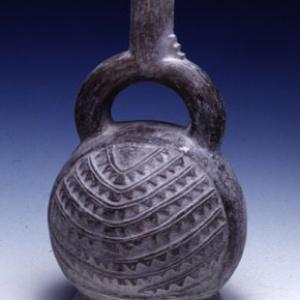
Globular vase with bracket loop

Globular vase with bracket loop

Globular vase with bracket loop

Globular vase with bracket loop

Globular vase with bracket loop

Globular vase with bracket loop

Globular vase with bracket loop





